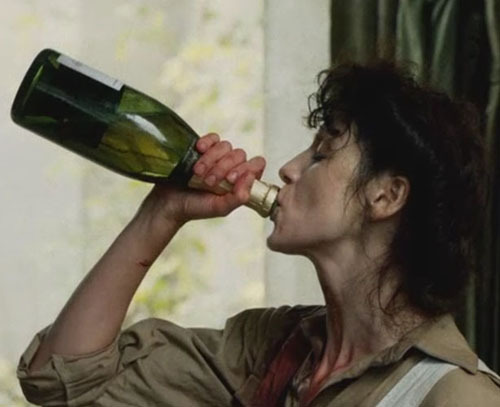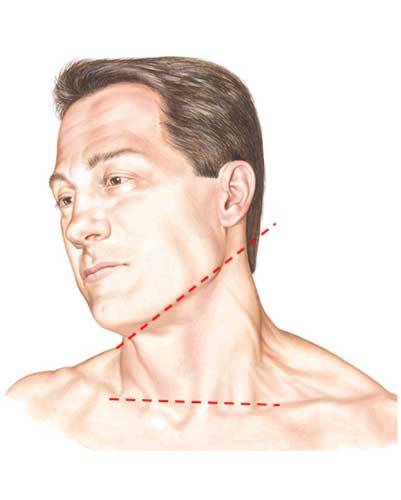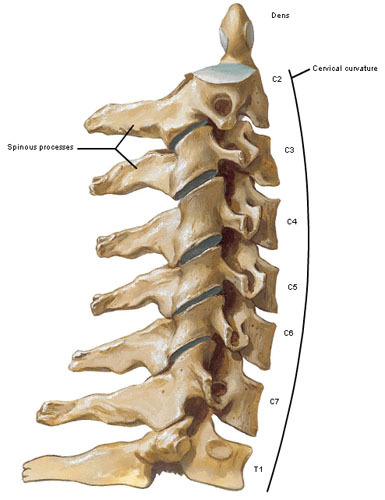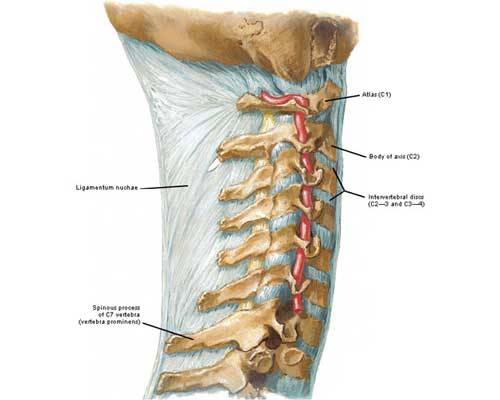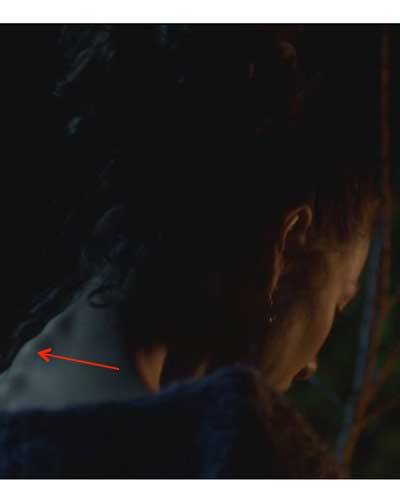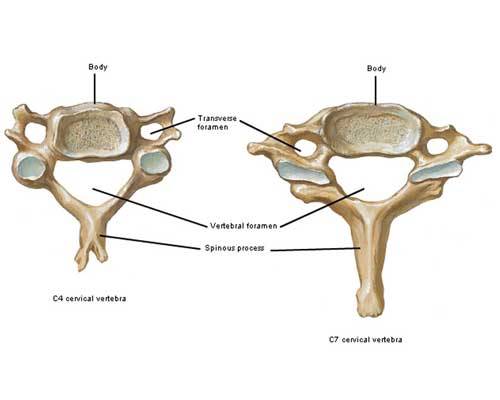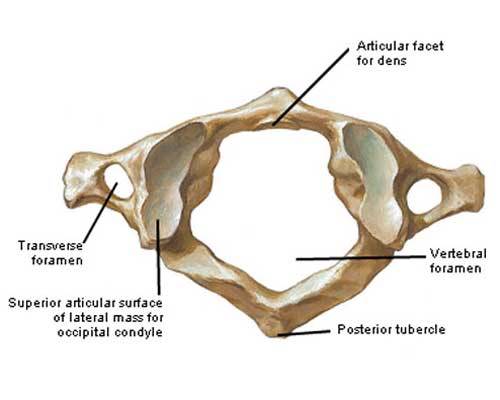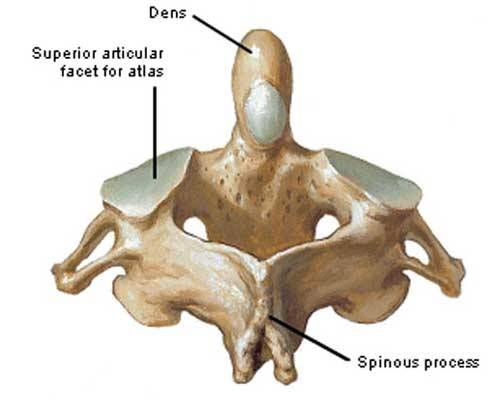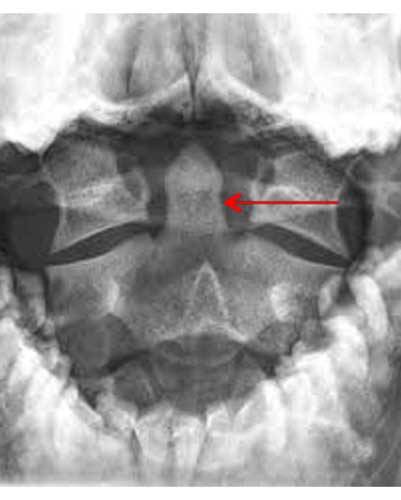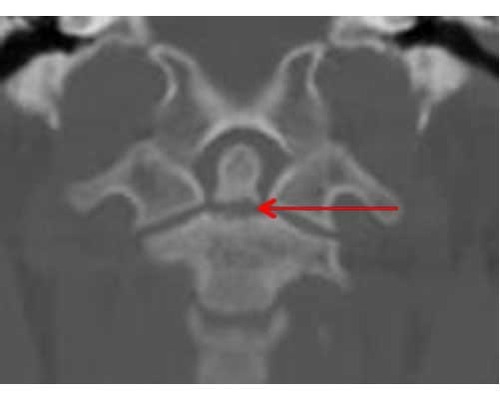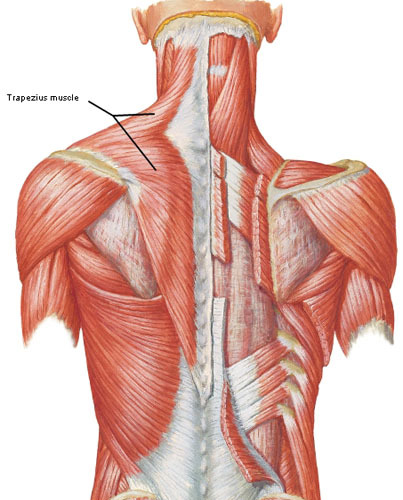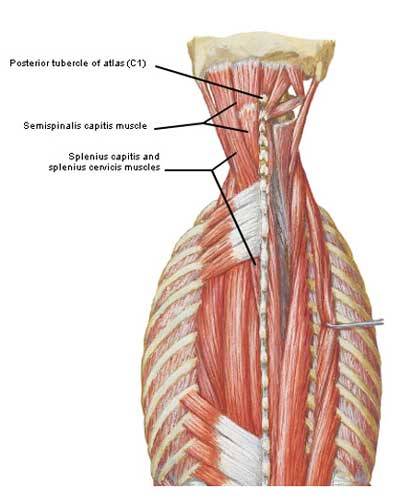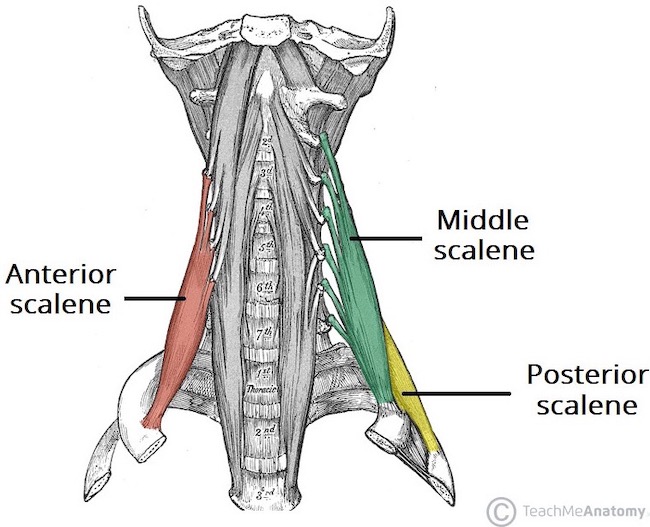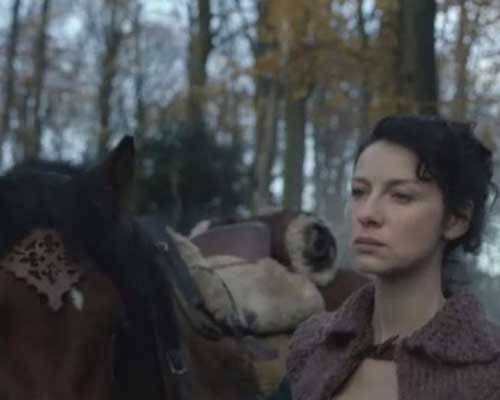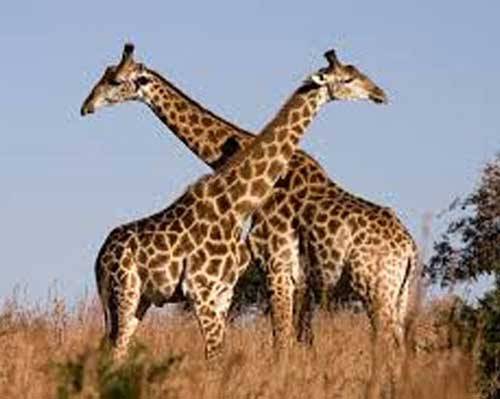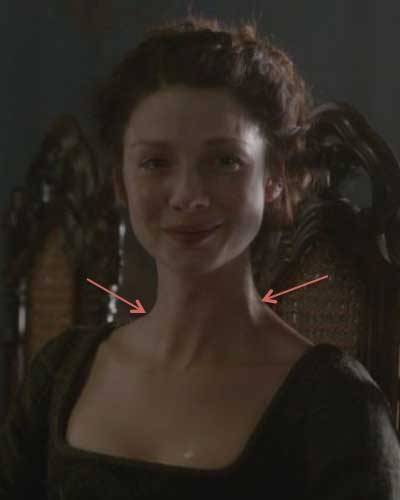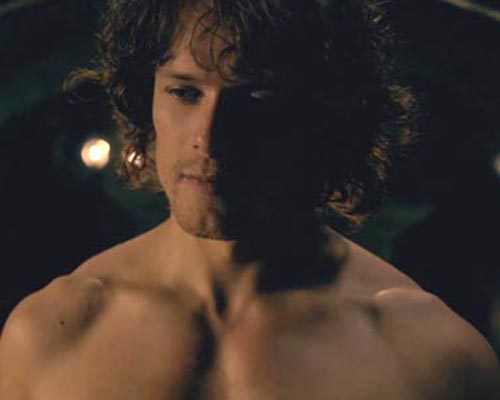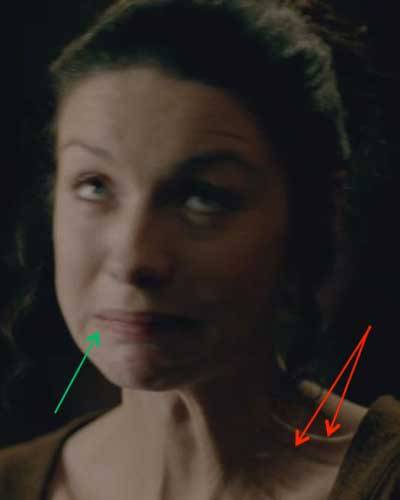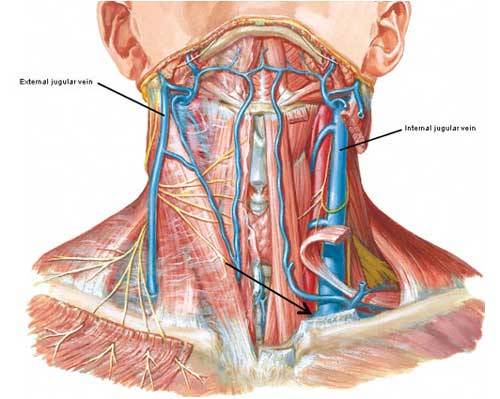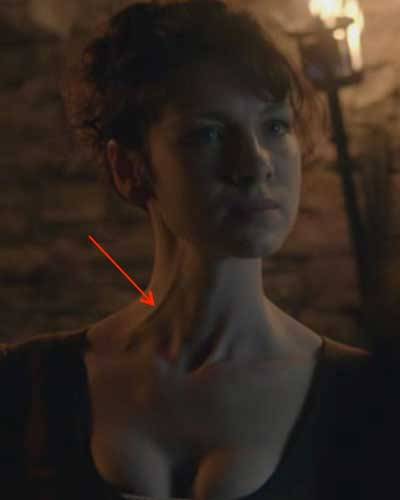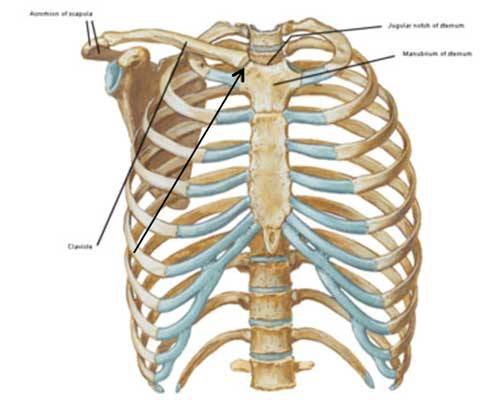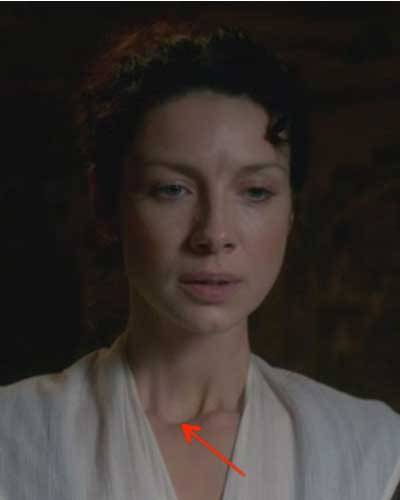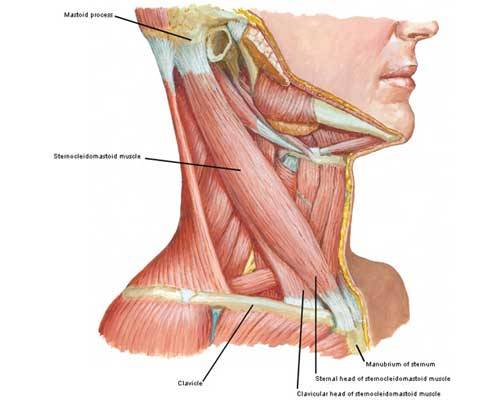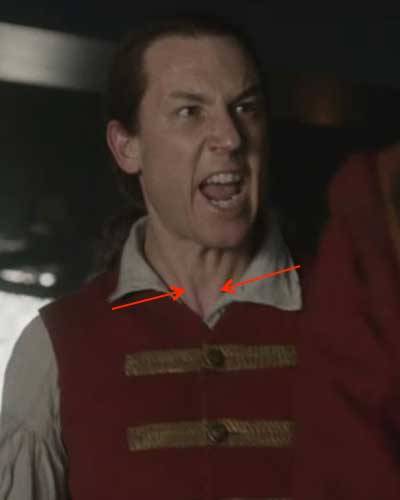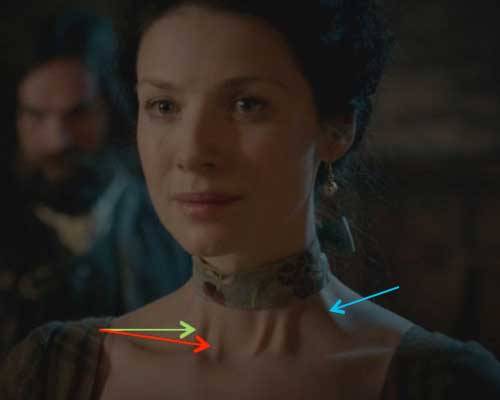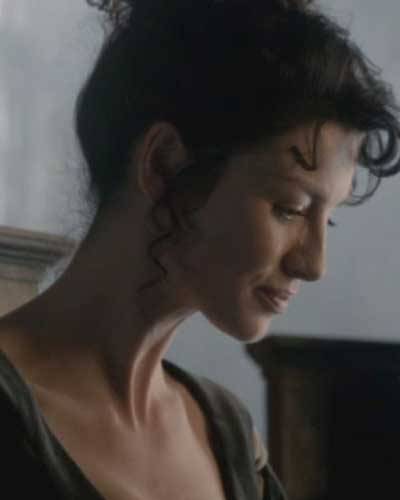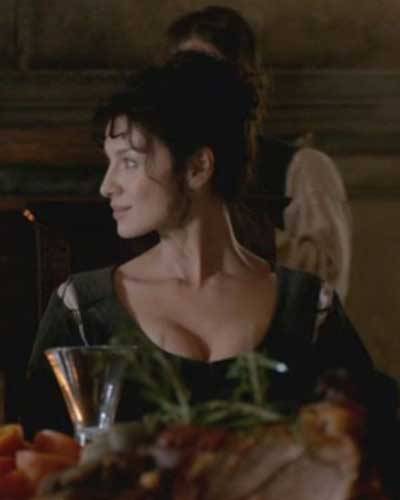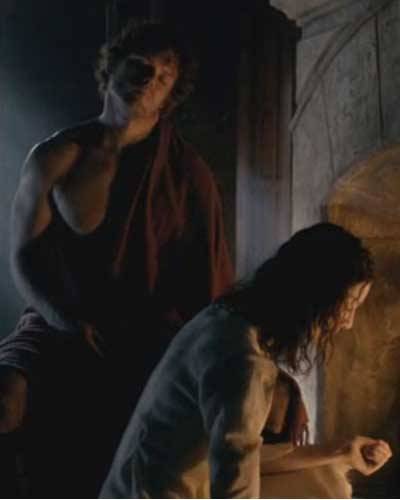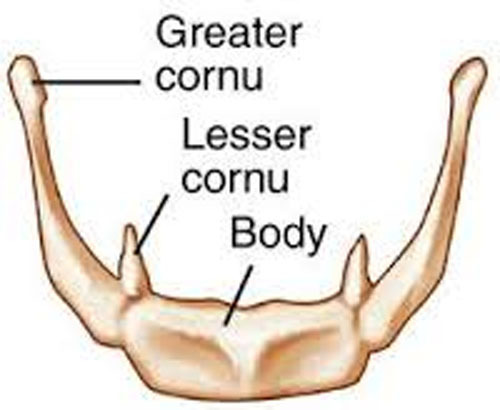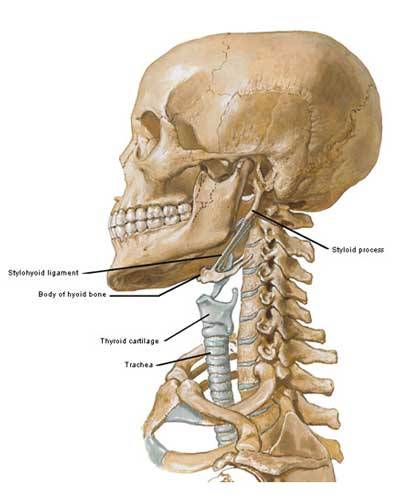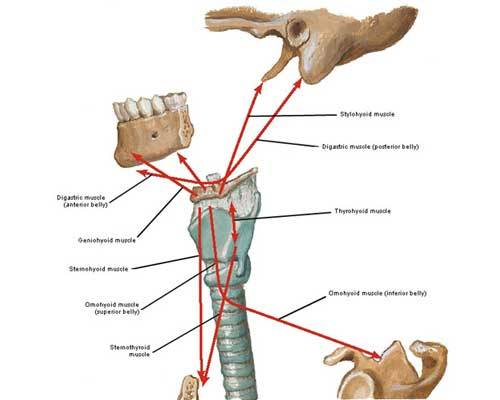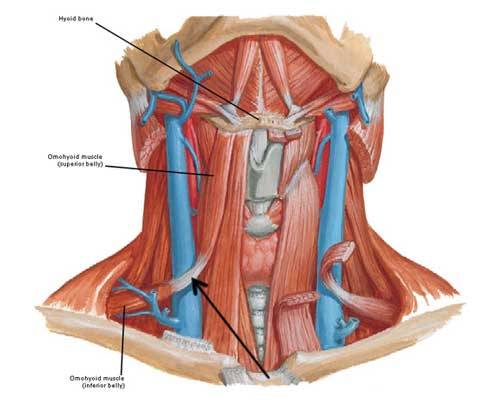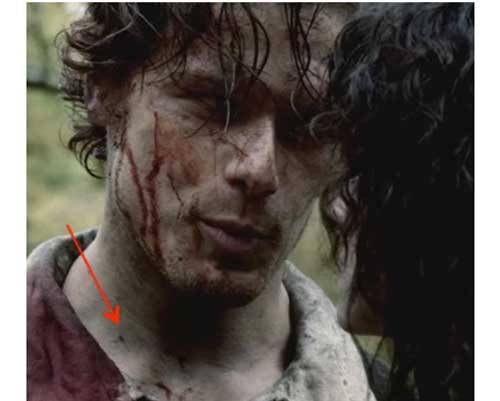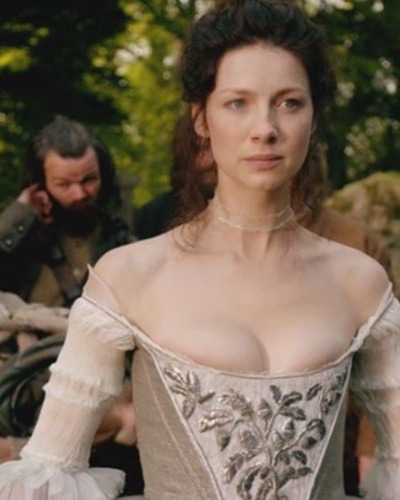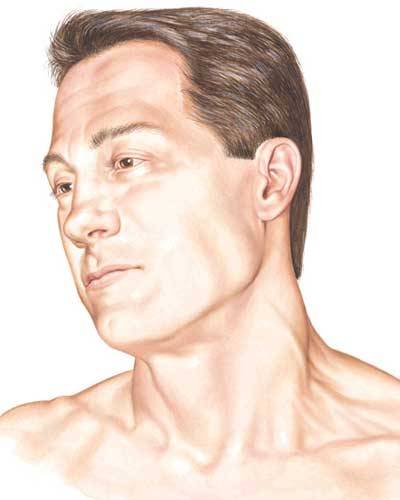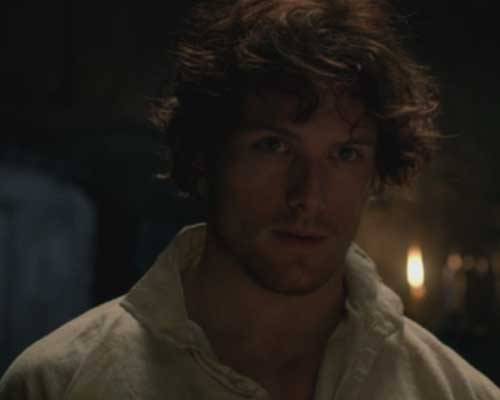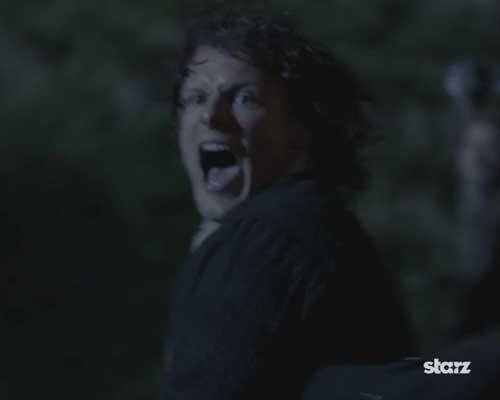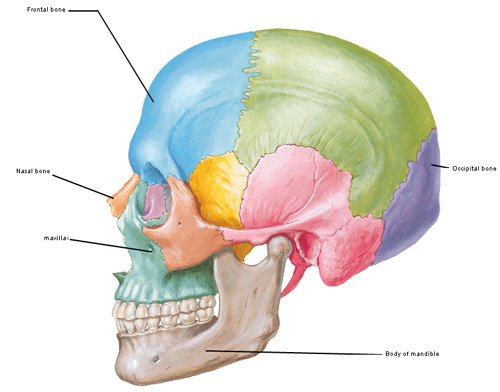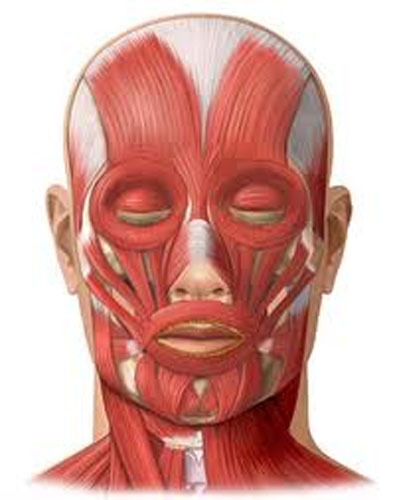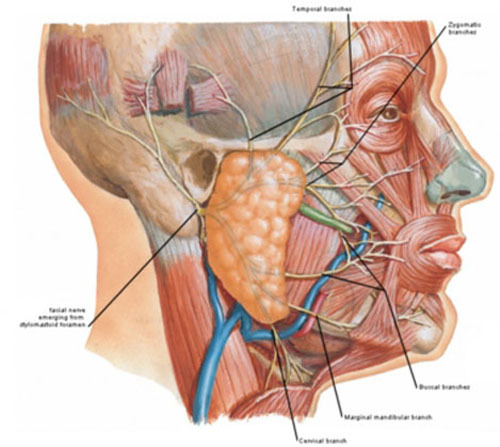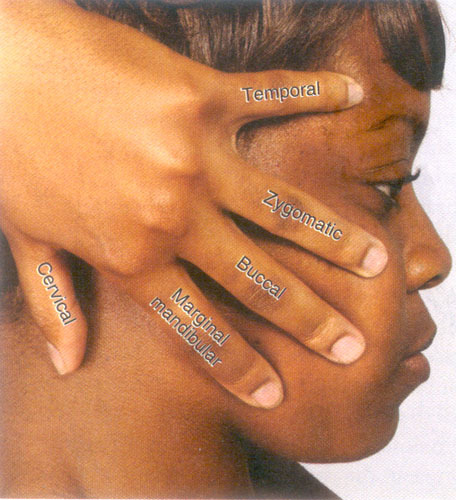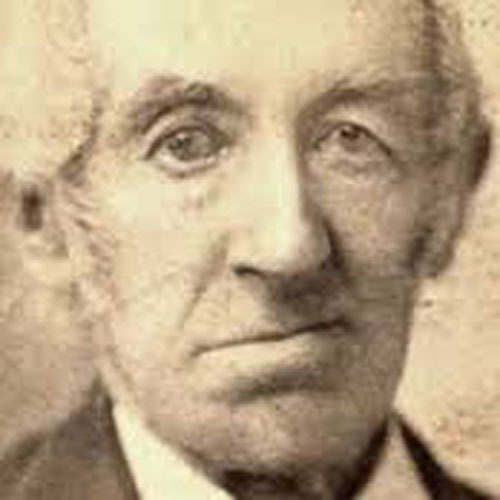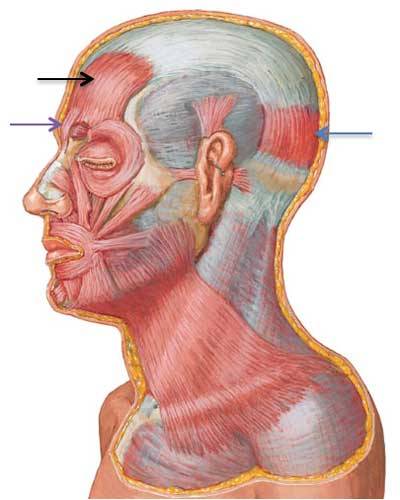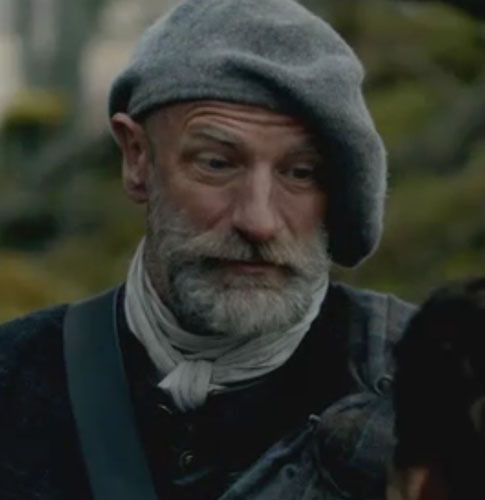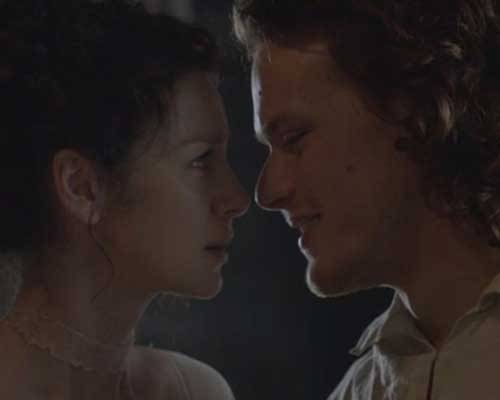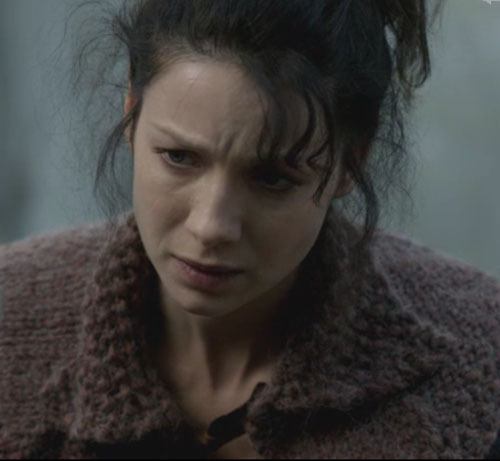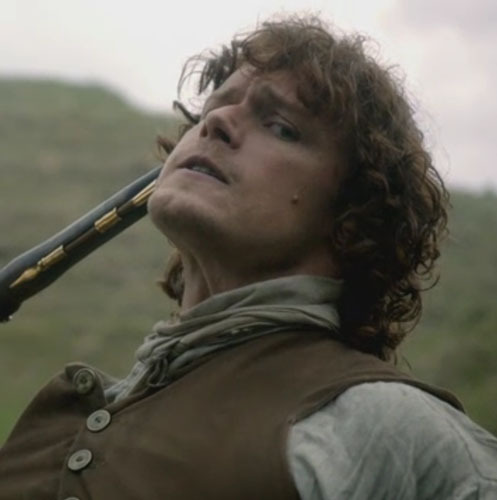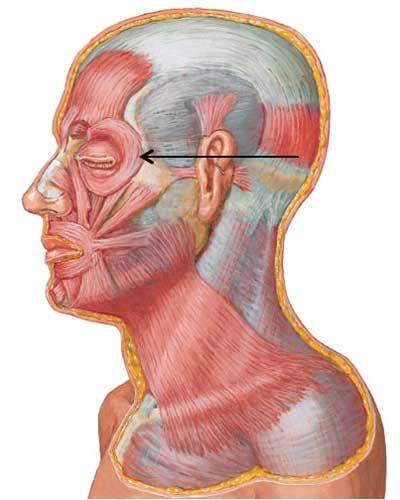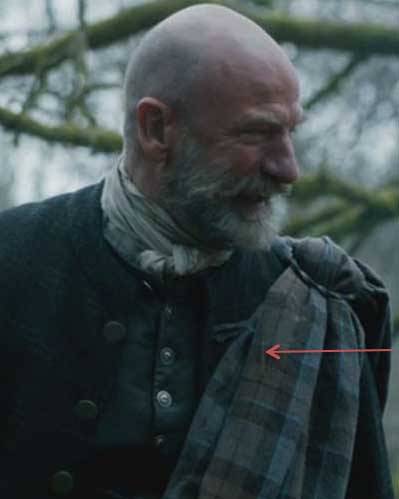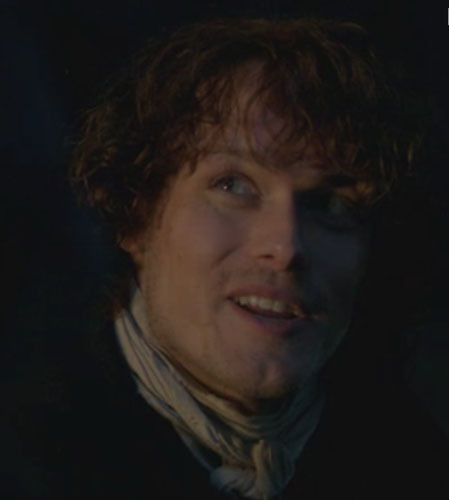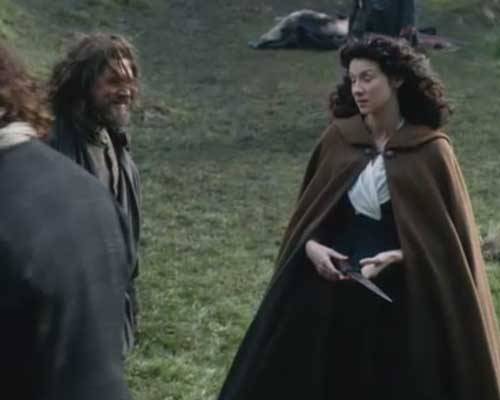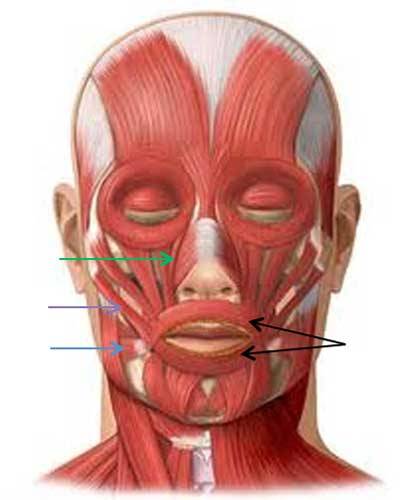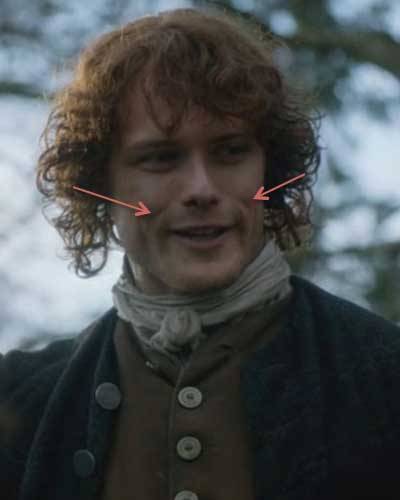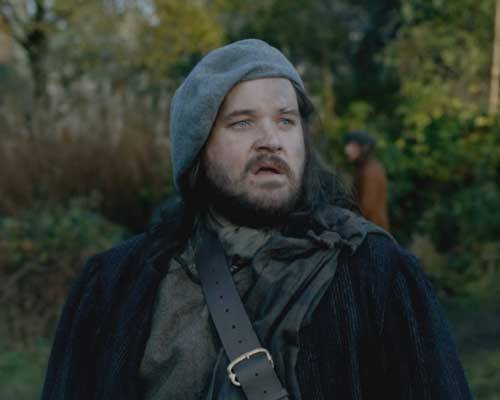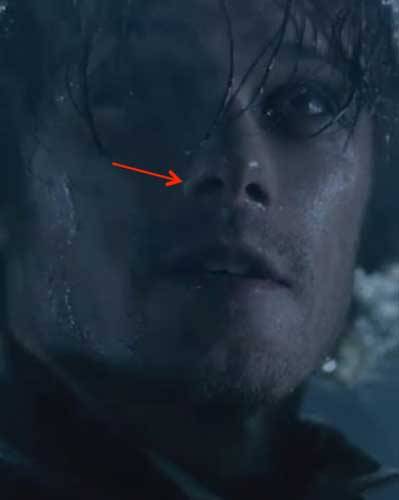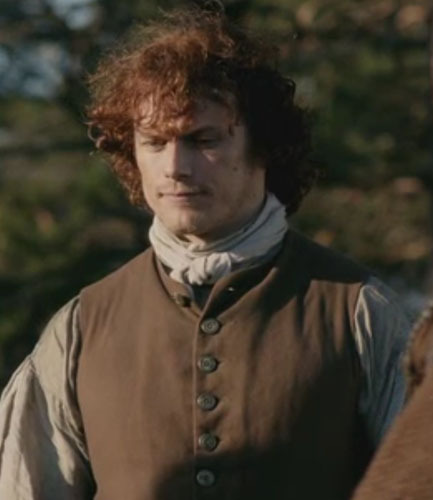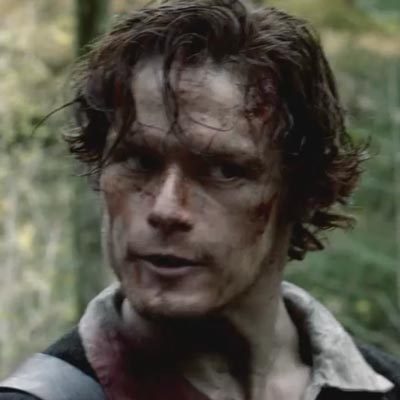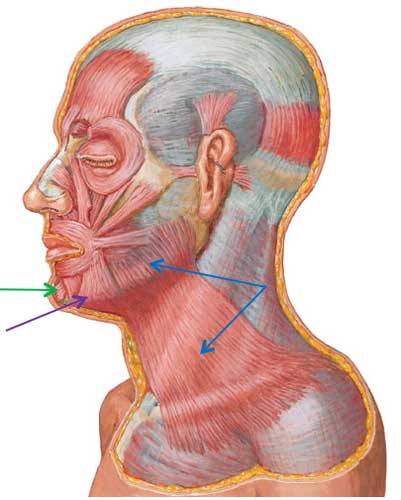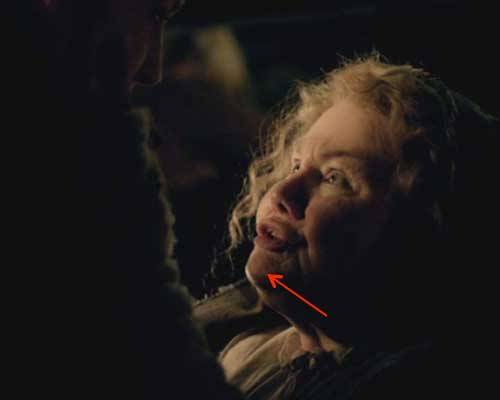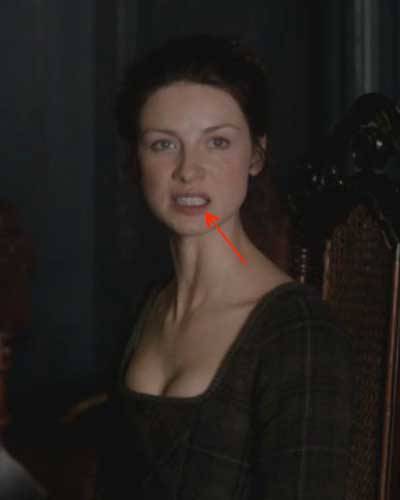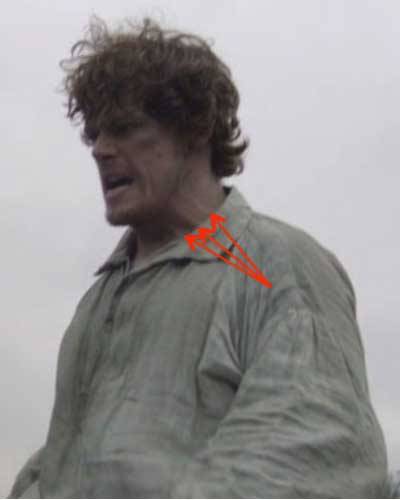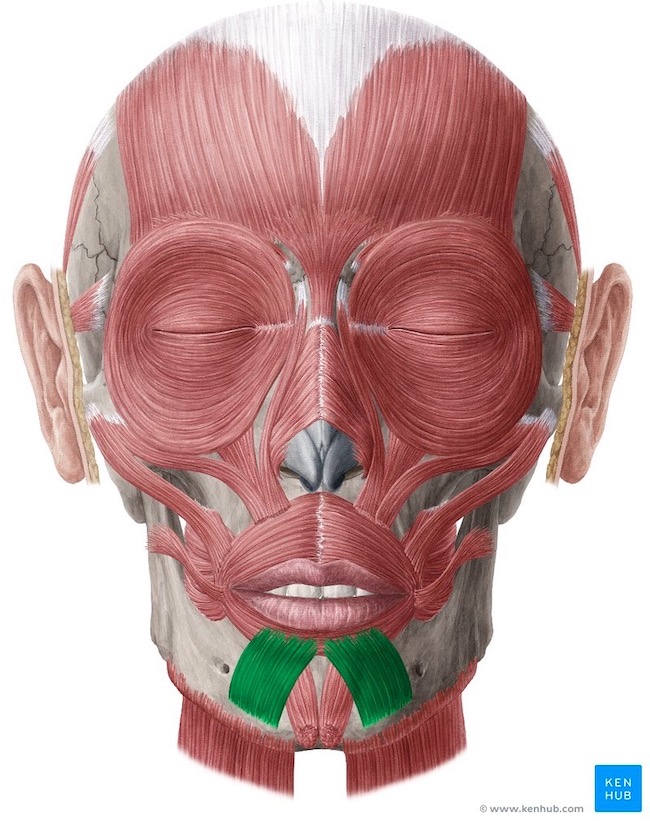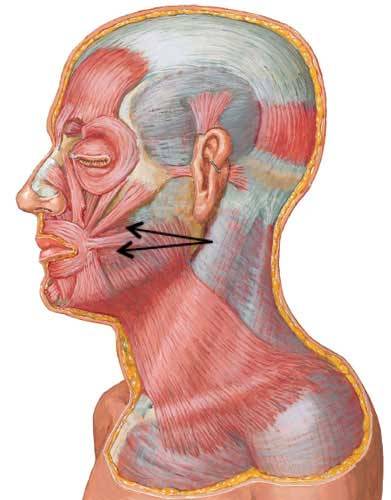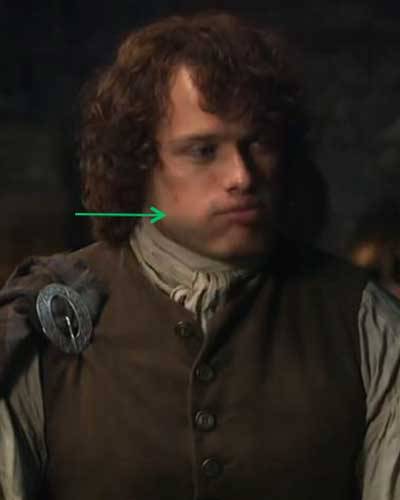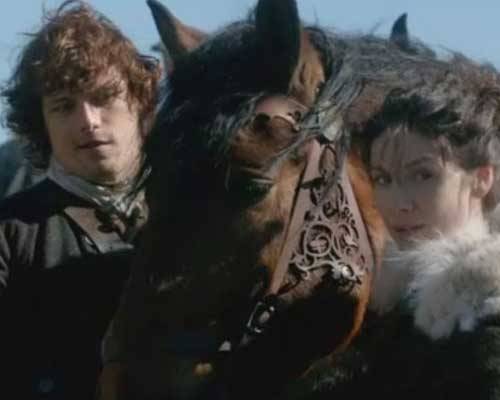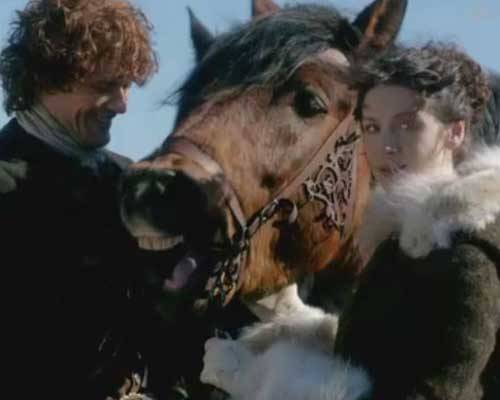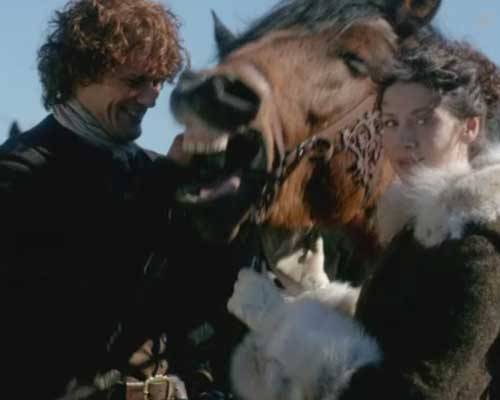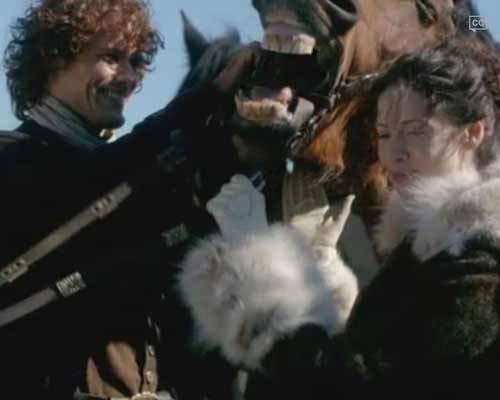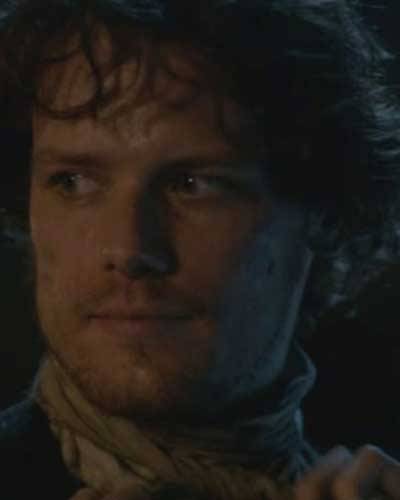Welcome colleagues! Today, Frank’s handsome visage gets the spotlight and everyone kens that BJR deserves to be on the dissection table for a change. Welcome to Anatomy Lesson #13: Anatomy of the Face. Today, we will expand on muscles of facial expression (Anatomy Lesson #11) as well as other facial anatomy; Frank and BJR will aid us in our quest.
Warning! If ye are a wee bit squeamish, this lesson includes several illustrations of the face minus skin.
Let’s start wi’ Claire as she stumbles upon Johathan Wolverton Randall, Esquire, Captain of his Majesty’s Eighth Dragoons (Starz episode 101, Sassenach). A doppelganger for Frank if I ever saw one! Herself writes:
“…the man himself might have been Frank’s brother. There was the same lithe, spare build and fine-drawn bones; the same chiseled lines of the face; the level brows and wide hazel eyes; and the same dark hair, curved smooth across the brow.”
His deeply-grooved skin is weathered to a “deep-baked tan.” His eyes…..…cold, calculating, assessing, dispassionate and perhaps weary? Well, it’s exhausting being a cold, bloody bastard! Burrrr!

Compare and contrast BJR’s features wi’ Frank’s. Here, Frank leaves Inverness for Oxford on December 21, 1945 (same day General George S. Patton dies). He stops his roadster near the entrance to Craigh na Dun, his face a blank canvas (Starz episode 108, Both Sides Now). His scholar’s mind entertains Mrs. Graham’s explanation of Claire’s disappearance so he takes a wee road trip up the craigh. Verra interesting how our Starz Frank can make subtle changes in his facial expression to differentiate between his evil ancestor and his current, pensive self.
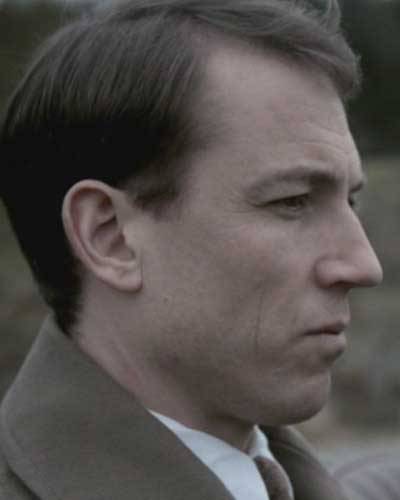
Ye now ken that muscles (and nerves) control facial expression. So, let’s do a quick and brief review of the twelve muscles of facial expression studied in Anatomy Lesson #11 – aye, there were many (Photo A). All are bilateral (paired) except the unpaired orbicularis oris. Here’s a wee chart of those muscles and their actions:
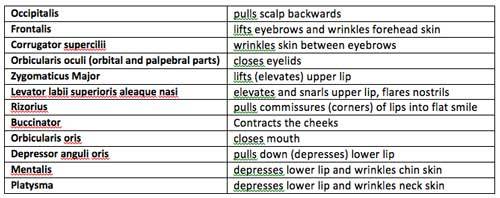
And, here’s a visual review of the same twelve muscles covered thus far (Photo A):
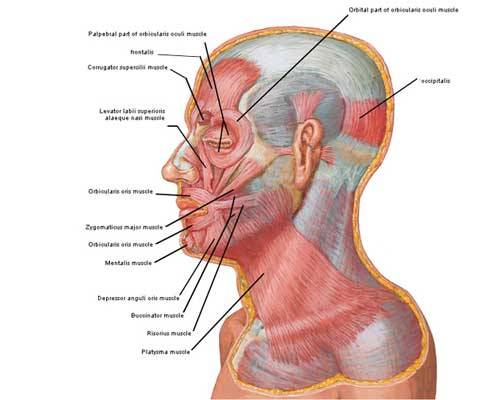
Photo A
And just to get us in the mood, here Frank is seated in Rev. Wakefield’s study, looking at Claire (Starz episode 105, Rent). His flat smile is largely due to contraction of powerful rizorius muscles such that his laugh lines or skin creases assume a vertical orientation (red arrow) rather than the more common nasolabial (nose-to-lip) fold that characterizes most smiles. BTW, he asks Claire: what she was doing out there on the desert wi’ Uncle Lamb (Quentin Lambert Beauchamp)?
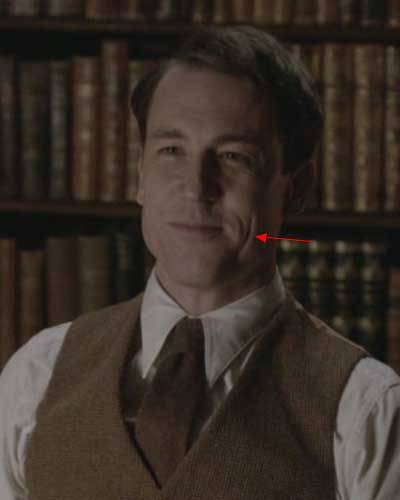
Weel, Herself explains in Outlander book what Claire was doin’ in the desert wi’ Uncle Lamb; what any young girl does after the death of her parents at age 5:
“…to the Middle East, to South America, to dozens of study sites throughout the world. Had learned to read and write from the drafts of journal articles, to dig latrines and boil water, and to do a number of other things not suitable for a young lady of gentle birth.”
Apparently, she was also rollin’ and lightin’ cigarettes (Starz episode 5, Rent) and gettin’ her first kiss from a nine-year-old dragonman’s son (Outlander book). Ooooh, what Mrs. Fitzwould say aboot that; the French corset was bad enough!
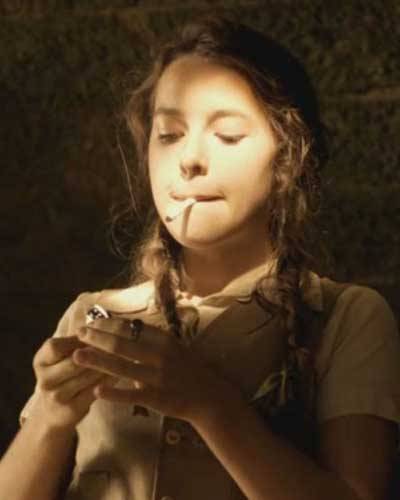
Now, let’s add a few new muscles of facial expression. Here’s a new lip depressor, the paired depressor labii inferioris muscles (Photo B). Each attaches from mandible to orbicularis oris of the lower lip. Try this: conjure the deepest frown possible. Feel tension or firmness at the sides of your neck, in the chin, and below the lower lip because four pairs of muscles are contracted: platysmas, mentalis, depressor anguli oris and depressor labii inferioris. Aye, it takes four pairs of muscles to frown!
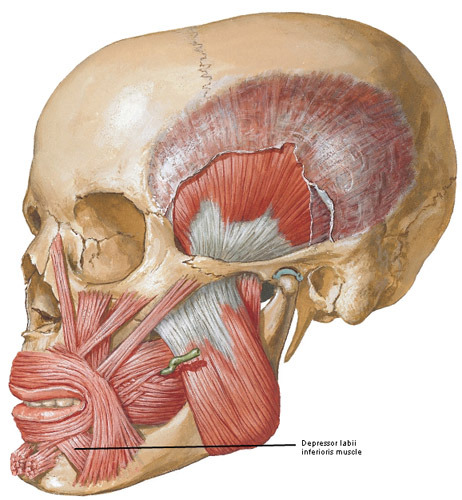
Photo B
We see Frank contracting depressor labii inferioris, depressor anguli oris and mentalis muscles as he tells Claire “So?” It doesn’t matter that his parents are stuck waiting for them at the restaurant (Starz episode 107, The Wedding); he wants to marry her right then and there! So, off to the justice of the peace (or whoever did the marryin’ back in 1940s England) with Claire slipping and sliding on her heels!
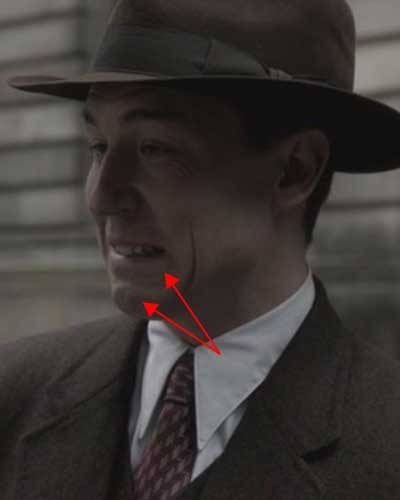
But, wait here’s three new lip-lifters for you and all are paired (Photo C). Levator labii superioris muscles span from maxillary and zygomatic bones to orbicularis oris. Zygomaticus minor muscles arise from the zygomatic bone to end on orbicularis oris. Finally, levator anguli oris muscles arise from maxillary bones and end on orbicularis oris near the angle of the mouth.
Try this: Grin your biggest grin ever and feel tension under cheeks and at sides of nose. Levator labii superioris, levator labii superioris alaequae nasi (LLSAN), zygomaticus major, zygomaticus minor, rizorius and levator anguli oris are all contracted. It takes six pairs of muscles to smile, ye ken.
Yes, I know about the fable that it takes more muscles to frown than to smile. Not so. Just to be thorough, a genuine smile also incorporates contraction of orbicularis oculi to make eyes crinkle. A fake smile leaves out the eyes!
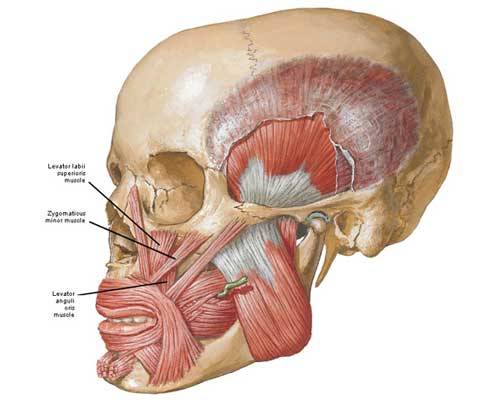
Photo C
Now, here’s BJR in full grin – mayhap better described as wicked glee (Starz episode 108, Both Sides
Now)! Herself writes:
“The smile had not left Randall’s features since Jamie’s appearance. Now it broadened enough to show the pointed dog teeth.”
Yup, his canines are showing (hummm… he would make a good vampire!). Claire and Jamie just made his day! Oh, aye, they delivered themselves into his power and he’s more than thrilled. All six pair of lip lifters are activated along with his frontalis muscles. Fort William isna a hotbed of humor, ye ken? At least not wi’ this sadistic bastard stalking the tiles and wielding a nine-tailed cat!
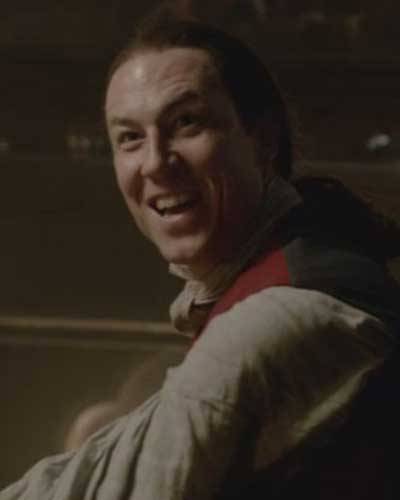
Next, let’s review a couple o’ skull bones (Photo D). The paired zygomatic arches or cheek bones receive contributions from temporal (pink) and zygomatic (orange) bones (Anatomy Lesson #8). The large unpaired mandible (Anatomy Lesson #11) is the movable part of the jaws that houses the lower teeth.
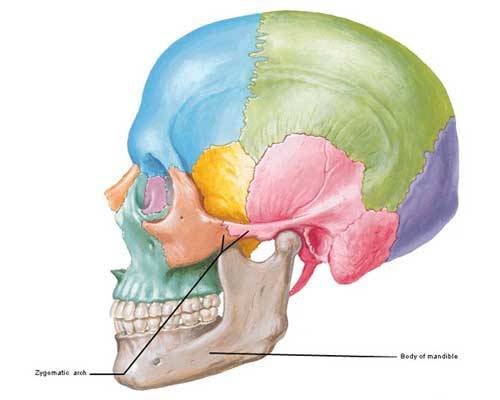
Photo D
Now for another new pair of facial muscles: although classified as muscles of mastication, the masseters add to facial expression (Photo E). Each masseter (Greek meaning to chew) spans from zygomatic arch to mandible. Contraction of masseters closes the mandible exerting 200 lbs (90.7 kgs) of pressure on the molars! Based on weight, masseters are the body’s strongest muscles. Very powerful!
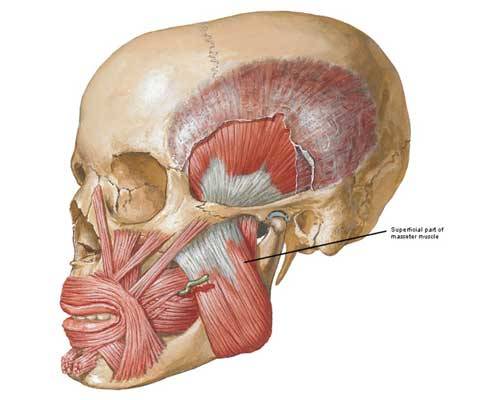
Photo E
The parotid glands, major salivary glands, overlap the upper part of each masseter (black arrow) and empty saliva into the mouth via a pair of parotid ducts (Photo F).
Try this: place your fingers on the chin and move them back to the angles of the mandible. Now, bite down firmly; feel the tissue harden under yer fingers? These are your masseters! Now, relax the masseters suddenly – did the mandible pop open? Aye, this is due to tissue recoil and pull of gravity. Now with fingers in the same place, move them upward a wee bit and press. Ye may feel warmth and the flow of saliva in your mouth because you just pressed on one or both parotid glands! You may not know this, but the mumps virus targets the parotid glands.
Last maneuver: open your mouth wide and say ahhhhh….. (as in the dentist’s office) – a very deep pair of muscles just contracted to perform that movement but we’ll puzzle those out in a later lesson.

Photo F
Now, hereeeeee’s Jamie! I know, I know, I just can’t write a lesson without him as an anatomical model – he’s just way toooo perfect! Steady. Steady. Staying completely scientific, he provides the best example of masseters in the series. Here’s Jamie and Claire at the stables (Starz episode 102, Castle Leoch) sharing a delightful lunch made of UST (a.k.a. unresolved sexual tension).
Jamie has quite an appetite, ye ken? Snort! He’s telling Claire the grim story of how he became outlawed. There’s a swelling (mmphm) over his right mandible; jaw is clenched because both masseters are contracted! Besides chewing, contraction of these muscles conveys intense emotion such as frustration, concern or anger. Och! I almost forgot…do ye ken the prominent ridge on Jamie’s neck (gold arrow)? Can ye name it?
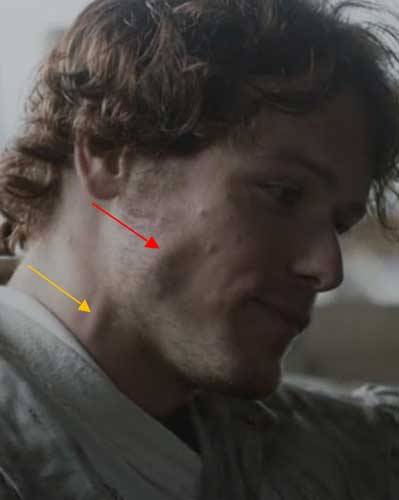
Oh, aye, if ye said right external jugular vein (Anatomy Lesson #12), a gold star for you! Good work!
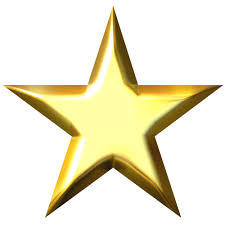
Here’s another muscle adding ta facial expression: classified as muscles of the orbit, levator palpebrae superioris muscles lift the upper eyelids. They run from bony orbits to superior tarsal plate (Photo G). As the levators contract, the upper eyelids lift.
Try this: gently pinch an upper lid between thumb and index finger. Feel a rubbery mass? This is the
superior (upper) tarsal plate. The lads in my elementary school loved to evert their upper lids to gross out the lassies – doable because of the tarsal plates. Ye can also feel a wee version in each lower lid but no muscles to move them; gravity and tissue recoil open the lower lids.
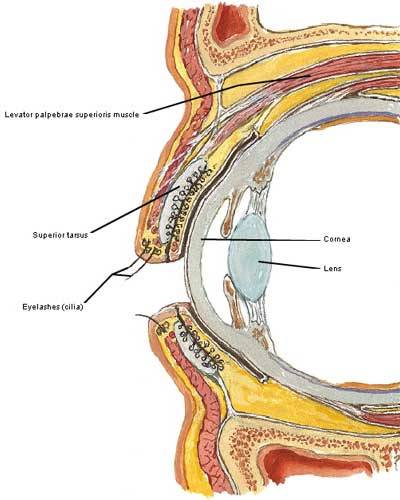
Photo G
Movements of levator palpebrae superioris muscles are easy to demo on both Jack and BJR because both like to tweak their upper lids. Starz episodes capture the movements best, but here Frank tweaks both eyelids as Claire’s train leaves for the front lines while he stays behind to do WW II intelligence work (Starz episode 103, The Way Out). She will not have him use his influence to keep her home! Bye, bye Frank.
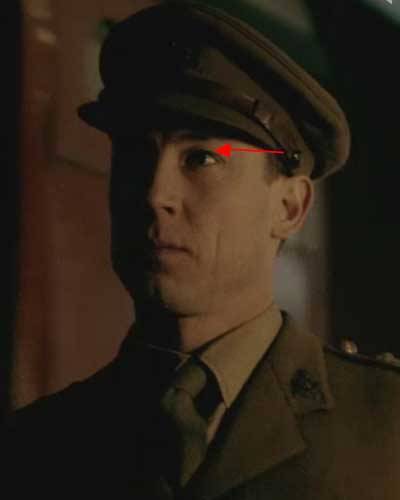
Not to be outdone, BJR contracts his levator palpebrae superioris muscles after tellin’ Dougal that Claire must be returned for further questioning by next day or he will suffer the consequences even unto death (Starz episode 610, The Garrison Commander)! Speaking of death, did ye notice the dead look of his eyes? Understand that his irises are hazel and in this light we cannot distinguish the boundary between pupil and iris. In effect, this enlarges the pupil lending a more detached and threatening appearance to the eyes.
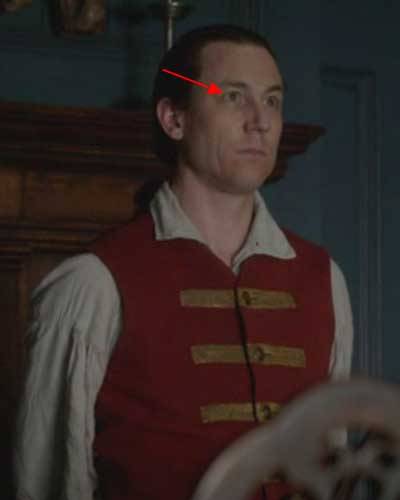
Now, let’s use Frank and BJR expressions for more review. Frank (Starz episode 108, Both Sides Now) has just beaten two guys within an inch of their lives and now his hand is closed around the
hyoid bone (Anatomy Lesson #12) of not-her-name Sally! His grin is flat and eyelids are slightly closed. And, oooh, his cruel smile doesna reach the eyes. In urban speak, this is known as smizing. Gives me the shivers! Remind ye of someone? Which facial muscles are contracted? If ye said rizorius and palpebral parts of orbicularis oculi then ye are correct! If ye said nothing, that’s OK too.
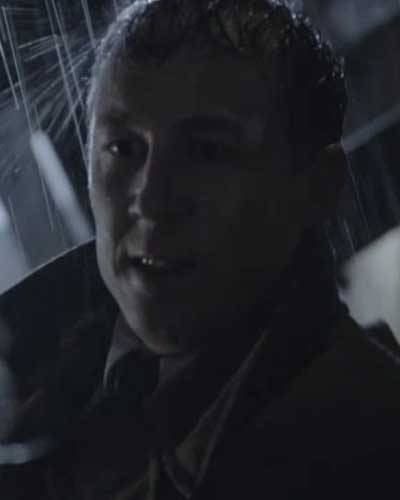
Call it weapon anatomy, but I must comment on the objet d’art that Frank pulls from his pocket in the alley off Drummond Lane (Starz episode 108, Both Sides Now). In the US, such a weapon is called a blackjack, perhaps a not-so-subtle reference to his sadistic ancestor? Frank worked in the Intelligence Unit at MI6 during WWII. He thoroughly beats and stomps his attackers suggesting he learned a wee bit about interrogation of a darker nature. Or, mayhap violence runs in his family line? After all, “evil knows but one cup.”
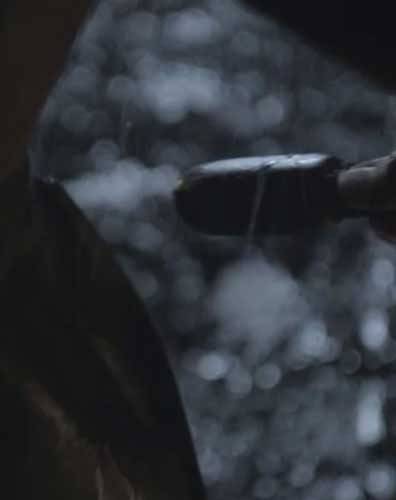
Wonder of all wonders: Claire makes BJR grin, a dangerous gambit to be sure! She tells him that we MacKenzies are all loyal subjects to the King – the funniest thing he has heard all week (Starz episode 108, Both Sides Now). Apparently, not much comedy goes on at Fort William.
Which facial muscles are contracted? This time, it is palpebral part of orbicularis oculi, rizorius and zygomaticus major because the flat grin is slightly lifted and the nasolabial (nose-mouth) fold as well as the vertical skin crease are now in play although the vertical creases are much more evident.
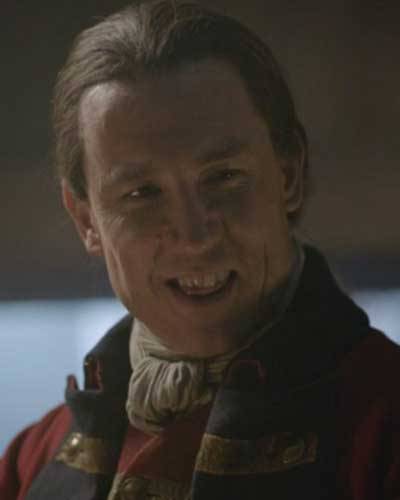
Next, Frank expresses grief at Craigh na Dun (Starz episode 108, Both Sides Now). He misses his wife even if he’s more interested in dusty old papers about his ancestors and she has to coax him into physical intimacy. Which muscles are contracted? The palpebral and orbital parts of orbicularis oculi, rizorius and zygomaticus major and likely mentalis as his chin skin is wrinkled.
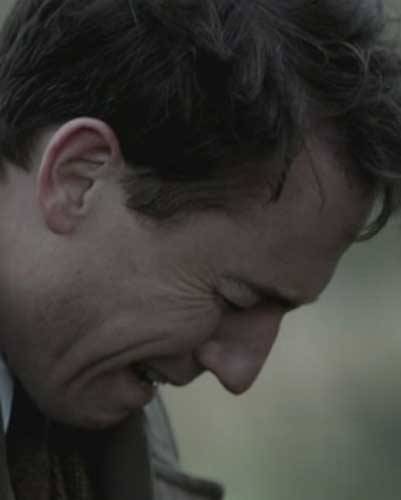
Now, this image of Frank is absolutely priceless (Starz episode 108, Both Sides Now). Funny man, Reverend Wakefield, explains his favorite theory of Claire’s disappearance: she gets disoriented,
falls into the Findhorn River and is swept 20 miles downstream all the way to Dunnaway Forest where she lives in a cave for seven weeks eating fish and frogs. Erm…Frank looks as if his best pal has gone bonkers! Which facial muscles are contracted?
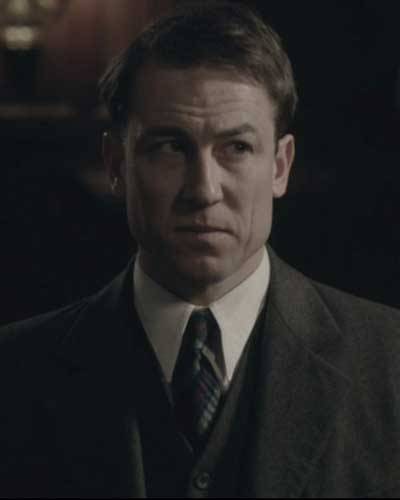
Well, obviously the frontalis muscles because his forehead is wrinkled, and corrugator supercilii (Anatomy Lesson #11) fer the deep wrinkle between the brows. Rizorius is contracted pulling the mouth into a grim line along with a slight downward tug by depressor anguli oris. Better the Findhorn River than the arms of another man! Another gold star to you for playing along!
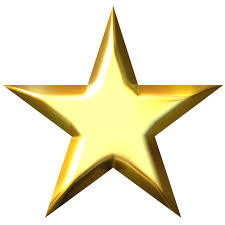
Did you find the Reverend’s theory laughable? Well, turns out something like this happened to an Australian woman last fall. She disappeared from a swimming hole in a Queensland rainforest. Gone for 17 days, she lost 17 kg (37.4 lbs) during her ordeal; surviving on insects, fish and river water. And, ye will not believe it but her last name is Fraser! Aye, ’tis the truth! You can not make this stuff up! Below is a photo of the area where she was lost.
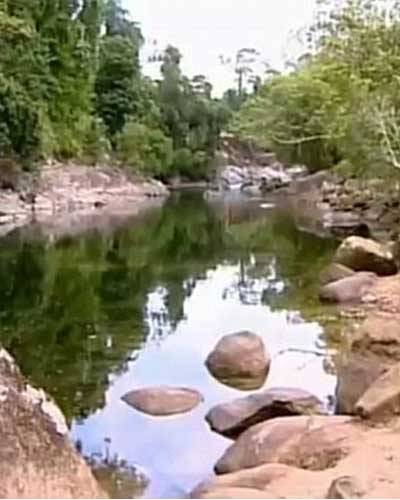
Now for an Outlander Anatomy PSA about accepting differences:
Robert J. Oppenheimer once claimed that “understanding is a lot like sex. It’s got a practical purpose but that’s not why people do it normally…” Here is a wee bit of knowledge to open perspectives and loosen sphincters while studying the body.
Ye ken that each of us is different on the outside? Even identical siblings with the same genetic
material enjoy subtle nuances in body form. Well, years in the dissection lab has taught me that we are each different on the inside too! Every person has their own unique expression of muscles, bones, blood vessels, organ shapes and so on making every human different inside and out. This is cause for
celebration, not for shame.
A heartfelt thanks to Diana’s books and the Outlander cast for providing a platform whereby we may explore this simple truth.
The deeply grateful,
Outlander Anatomist
Follow me on Facebook and twitter!
photo creds: Starz, Netter’s Atlas of Human Anatomy, 4th ed., Clinically Oriented Anatomy, 5th ed., Hollingshead’s Textbook of Anatomy, 5th ed., The Guardian, Australia, Daily Mail Australia, www.wikipedia.org, www.commons.wikimedia.org, www.medical-dictionary.thefreedictionary.com

